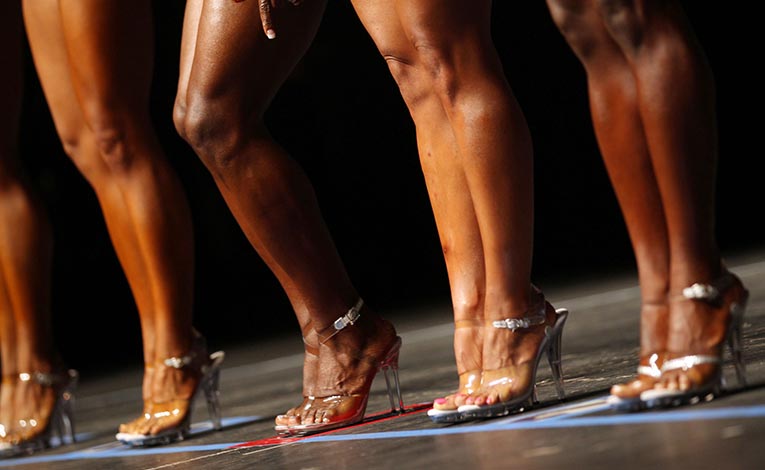Emily Green hasn’t slept for weeks. The only thing keeping her eyes open is pure adrenaline — and the five long black coffees she knocks back each morning.
She’s been exercising for over three hours a day, six days a week, and fueling herself for the grueling regimen with only 700 calories.
In a nutshell, she describes herself as an absolute “basket-case.”
While starvation and sleep deprivation sound like Guantanamo-style torture, Emily is actually doing this to herself. It’s 2012 and at 25 years old, she’s training for a fitness competition – the sports model category.
If you’re thinking this seems like a paradoxical way to prove that you’re a pillar of health and fitness, you’re absolutely right. It’s paradoxical and dangerous. The troubling thing is, Emily’s far from alone in this cruel and unusual way of achieving a 10/10 physique.
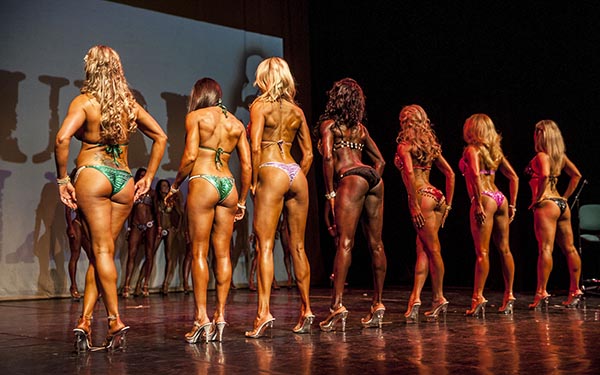
Bodybuilding and physique competitions aren’t anything new in the fitness world. Arnold Schwarzenegger won the famous Mr Olympia title seven times in his hey-day, while the international Arnold Classic awards its strongest man with US$130,000 in prize money, a Hummer and a designer watch with a price tag that’d make you weep.
Traditionally, these bizarre competitions have been the domain of elite bodybuilders and models. To most ordinary people, standing almost naked on stage while a panel of judges openly criticise their body is the stuff of nightmares.
But these days our quest for a selfie-worthy body has escalated to a point where ordinary people are strutting these same stages wearing nothing but a bejewelled string bikini and a deep shade of orange.
Competing is serious business. Contestants enter categories like fitness model, bikini model, figure and bodybuilding, each with its own assessment criteria for muscle definition, balance and symmetry, plus stage presence. Contestants are even expected to attend special posing workshops.
For professional athletes, it takes between 12 to 17 weeks of specialized training, dieting and fine-tuning their bodies to be “stage ready.” Now, ordinary women with little experience are trying to mimic this training routine.
Tony Lanciano from International Natural Bodybuilding Australia, which holds competitions around the country, says organizations like his created new divisions as a way to reward regular people for the hard work they put in at the gym.
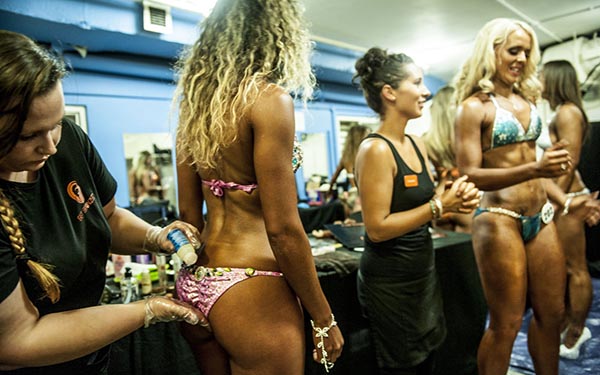
“If we can help promote healthier living, eating right and training, then why not?” he asks.
But that’s not how everyone sees it.
Nardia Norman has been in the industry for more than 15 years and has watched every fad have its day. An author, educator and Australian Personal Trainer of the Year, she’s an expert in the field.
After spending too much time repairing young women broken physically and mentally by these competitions, Norman believes this is the most dangerous fad yet. She’s heard horror stories of bulimia, breakdowns and clueless trainers prescribing clients severely restrictive diets, while flogging them in the gym to prepare for the stage.
Norman says enough is enough and wants industry-wide regulation.
“Anyone can enter these competitions,” she says. “We’re seeing the wrong type of woman get on stage and it’s contributing to an increase in body dysmorphia, disordered eating and self-esteem issues. We need official assessment criteria that trainers can use to find out who’s at risk.”
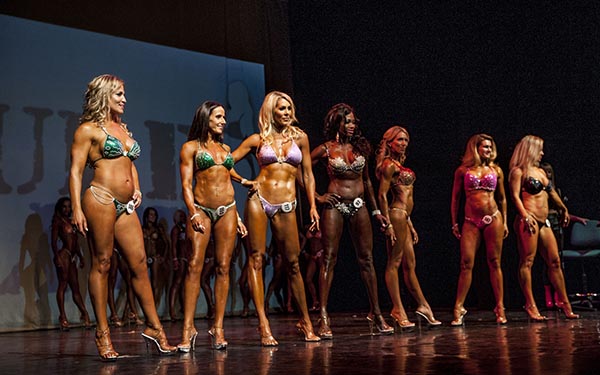
These women are suffering from low self-esteem and see it as a way of getting external validation.
Norman, who herself competed, has no issue with the competitions themselves, but believes there is a serious problem when a slightly-overweight, sedentary office worker sees images of these women in a magazine and decides she wants to be a fitness model in the same time frame as a professional athlete.
“There’s no way she’ll be ready in that time unless she goes for drastic measures, which is exactly what we’re seeing more women do — and it’s absolutely destroying them,” Norman says. “These women are suffering from low self-esteem and see it as a way of getting external validation.”
Making things worse, these vulnerable young women put their trust in under-qualified trainers and “coaches,” who see dollars signs and an ego boost. Even if an official screening tool was to be enforced, with no regulations, it still comes down to a trainer’s ethics.
“Someone with the wrong mindset or lack of experience won’t care about that person’s health and wellbeing,” Norman warns. “Nutritionists are the only people who should be writing diet plans, yet we see trainers who’ve read an article online and think they know what they’re doing.”
While Lanciano acknowledges the preparation can be brutal, he stresses that people who are forced to go to extreme measures like that should sack their trainers.
“We put trust in these trainers and I’ve seen some terrible things happen over the years,” he says. “But that’s something the government needs to regulate. It’s scary but there’s nothing we can do about it.”
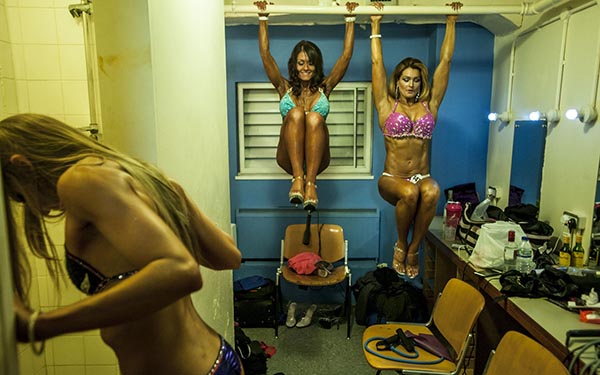
Green readily admits she was the vulnerable young woman Norman describes. After a lifetime of being the chubby kid at school, she hoped a competition would be great motivation to get the size-eight body she’d always wanted. Blindly, she found herself a trainer and signed up, not even considering the consequences.
“I weighed 75 kilograms (165 pounds) and got on stage at 53 kilograms (117 pounds),” she says. “I put my body through hell for 17 weeks. Then I did another three shows in a year.”
I put my body through hell for 17 weeks. Then I did another three shows in a year.
To lose 22 kilograms (48 pounds) and gain a massive amount of muscle, Green’s starting point was an hour of cardio and an hour of weights training six days a week. Her diet was reduced to 1,500 calories a day.
When she wasn’t losing weight fast enough, her trainer increased it to two hours of cardio, one hour of weights training and 30 minutes of high-intensity interval training — six days a week. She was living on 700 calories, consisting mainly of tinned tuna and swordfish.
“I couldn’t sleep because I was hungry, which made me crazy — like I wasn’t even on this planet,” Green says. “There were times in the gym where I felt like I was about to fall backwards because I was so energy deprived.”
While Green quit competing the ramifications on her body were severe.
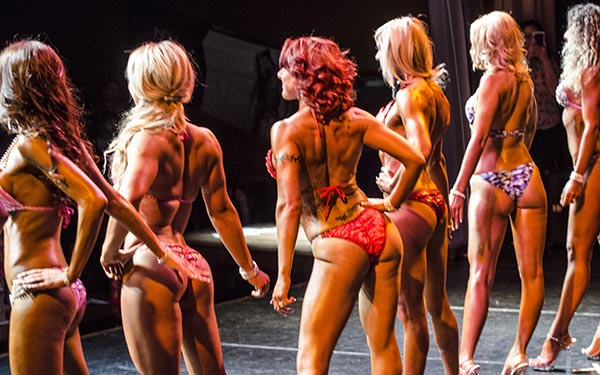
Her weight uncontrollably ballooned back to 75 kilograms (165 pounds). She was suffering from mercury toxicity from eating so much tinned fish, had lost her period and was suffering from depression.
“That’s when all the mind games started, which was horrible,” she remembers. “I needed psychological help for body dysmorphia. Doctors were calling me while I was on holiday overseas telling me to come back straight away to start treatment, because they’d never seen mercury levels that high in someone.
“I didn’t have support from my trainer and didn’t know where to go. I was in a big, black hole of depression. I just wasn’t prepared for any of that.”
After two years of psychological work, Green finally felt in control of her own body again. She’s now back to full health, but is concerned that many other women aren’t that lucky.
“I wasn’t mature enough to see what could have happened to me. I needed a trainer to be open and honest about the risks,” she says. “All I focused on was a hot body and fitting into skinny jeans.”
She has a message for any woman who’s still thinking of entering a fitness competition after hearing her story:
“Make sure you’re doing it for the right reasons and not because you need to fill a void, or are avoiding dealing with body issues,” she warns. “Never in my wildest dreams would I ever do that again.”
Courtesy of: Mashable
